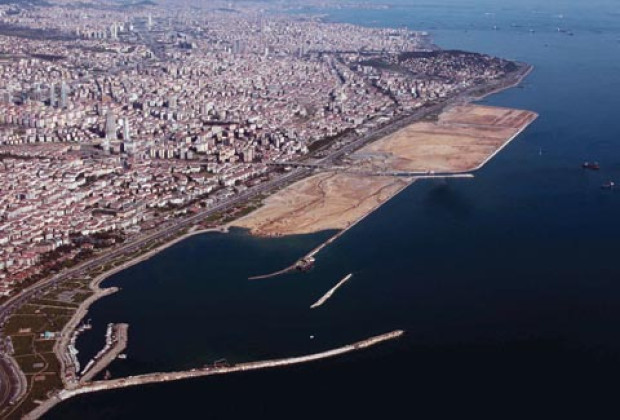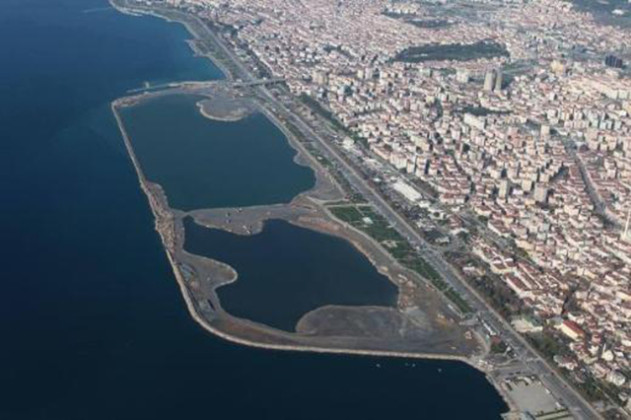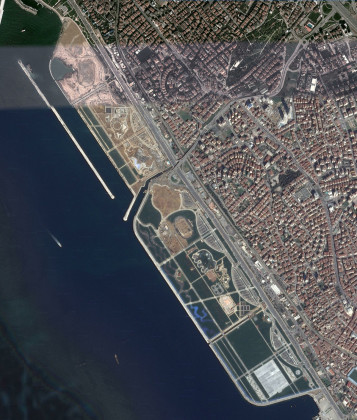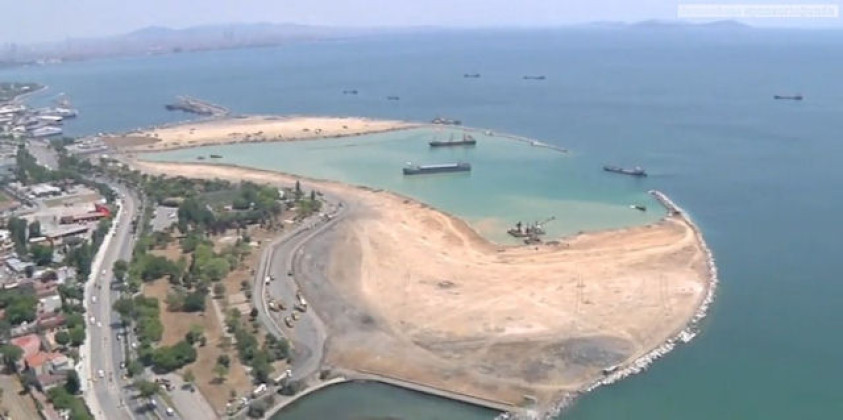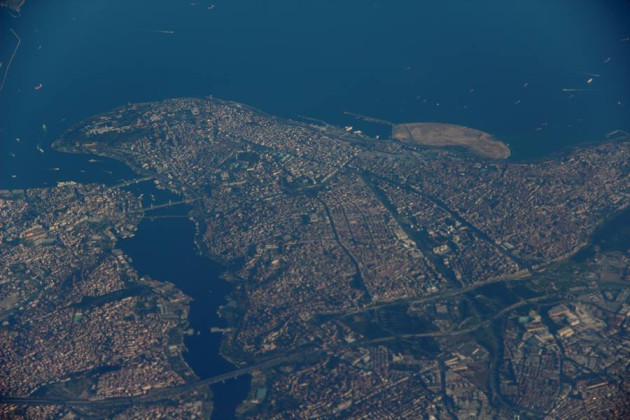From Excavation Logistics to the Coasts: Urban Political Ecology of Coastal Land Reclamation Areas (*)
The modern city is in some way a component of layered, complex traces of an “excavate and infill” story which is embedded in time and space and expressed in urban landscape throughout the history. More precisely, let me refer to the curious eyes that chase beyond what appears at first. Simply, the process I basically conceptualized as “excavate and infill” does not only provide finding new spaces for destruction-construction, or circulation of capital. It also creates the spatiality where social relationships will be reorganized and will include the waste originating from the urban metabolism back into the production relationship. The coastal land reclamation projects in Istanbul, on the other hand, refer to the current address of this rationality. The field of study1 I propose and work on is the increasingly popularized “coastal land reclamation projects” which are the reproduction and redefinition of the new scale (mega) and new location (coasts) of urban transformation in a way in the context of architecture, urban planning and ecology of İstanbul. It is a trial of examination on the underlying processes in terms of urban political ecology, and it is about that this perspective is worth noting. My concern is trying to understand the urban political ecology, within the complex background of urban transformation’s progress from excavation logistics to spatial projection of the landfill areas -that are forced to be integrated into the body of the city- which is creating a form of metastasis. Besides, mostly, in transformation processes that are institutionalized via chains of architectural projects in urban landscape, it is needed to underline the role of spatial production and reproduction of the complex relationship between the nature and the society from an urban political ecology perspective.
The most noticeable characteristic of the concept of urban political ecology is that it considers the urban space as a foundational component to understand the transformation of the society-nature relationship. To elaborate, it is a rejection of the phenomenon that sees the urban opposite to the nature, and it argues that we cannot understand urban problems without understanding ecological problems2. Rather than questioning the function of the nature within the city, it asks the question of how the nature became urbanized, trying to examine the dialectical relationship that shapes the socio-ecological context of the city. For example, we see the analyses of this dialectical relationship in the initial studies of Harvey (1996) and Piers Blaikie (1985; Blaikie and Bloomfield, 1987)3. Considering the architectural theory and practice in Turkey, it is possible to say that this is a quite new context. Do you think about that the architect is still considered as only the subject who “designs, builds” structures in faculties of architecture? Furthermore, we can ask whether young generations of architects are still seeing their productions for the city to be independent from the ecosystem, or not. Where is the interface between the issues that we should work on in the 21st century and the discipline of architecture positioned? All of these, unfortunately, still stands in front of us as questions that should be urgently discussed by those in the theory, practice and education of architecture. On the other hand, in terms of the context that I described to be new for the discipline of architecture, let us to think about juxtapositions as both ecology and urban struggle in the city in the social sense. While their names still represent the sides of dichotomy-opposition (city reference vs. nature reference), there is a noticeable mutuality of fate in terms of intertwined dynamics of fighting and the equivalent characters of protecting the urban fabric and protecting the natural environment.
If we continue on the questions of how the nature became urbanized, the questions of how the coasts and sea of Istanbul became urbanized, who are using these, and moreover, how this issue reached an extent that Istanbul could generate to a new district4. It is possible to resort to the arguments that coasts have been excavate and infill through the history, and the coasts of countries such as the Netherlands and Denmark are being filled today. The subjects that should be rethought are the method of forming coastal areas in countries like the Netherlands and Denmark [infill areas are filled with foundation material that is obtained from open sea and in compliance with the coastal ecosystem, and it is then made stronger and suitable for use after completing the filling (Küçükakça and Akkaya, 2014], that the content and strength of the material we call construction waste change considering the geography [for example, 80-85% of the construction waste in the Netherlands and Denmark is concrete and wall-building materials. 30% of the construction and demolition waste in Kuwait is concrete (Ölmez, 2008; Küçükakça and Akkaya, 2014.) The situation in Turkey is worrying even if we believe in the statements of contractors]. We can also respond to the argument that coasts have been filled through the history as: Considering its coast, Istanbul has never been filled through history up to this irreversible and radical scale, and we have not experienced the potential problems (social, climatic, in terms of sea ecosystem, etc.) of it. It is obvious that using the waste materials for filling the coast is a solution found in a hurry to reduce the cost of transporting and storing the materials that are left out after huge urban transformation initiative. While listening to the arguments that green spaces are produced, it is also needed to look at which habitats are destroyed behind this “production” and whose health is in danger (e.g. asbestos) and to keep a record of both winners and losers. Additionally, leaving the phenomena of the square and the public sphere in a large peninsula and trying to cover up the planning and social organization mistakes that reduce green spaces and earthquake gathering areas have contents that surpass the limits of such an article.
To sum up, we should underline that we cannot discuss any phenomenon, intervention about the city independently of its historical-geographical context, we cannot separate the production of space from the production of nature, and the future of our coasts, therefore our city, is much more than arithmetic’s of excavation logistics. That is, let us continue to look at ecology from the opposite corner!
NOTES
1 “The Urban Regime of “Excavation and Infill” In the Case of the Waterfront Areas of İstanbul Between 1900 and 2017” that is still in progress by Esra Sert and her supervisor Prof. Güven Arif Sargın at the Department of Architecture, Faculty of Architecture, Middle East Technical University.
2 Maria Kaika, City of Flows: Modernity, Nature, and the City (New York: Routledge, 2005), pp.5.
3 Sert, E. and Tunçay, H. E. (2013) “Cities, Social Cohesion and the Environment: The case of Taksim Square, İstanbul”. New Opportunuties and Impasses: Theorizing and Experiencing Politics, POLITSCI’13 Conference Proceedings, October 31- November 2, 2013, İstanbul, University of Department of International Relations, pp.140.
4 Web source: http://www.hurriyet.com.tr/istanbulda-dolgu-alanlar-2-55-kmye-ulasti-40inci-ilce-oldu-40574703 (last accessed:18.10.2017)
Related Content:
-

JiYuWon
-
Participatory Dialogues for Urban Design
Bilgen Coşkun and Dilek Öztürk talked with architects and urban planners Christelle Lahoud, Pontus Westerberg and Klas Groth from UN-Habitat about designing smart cities through participatory planning approaches.
-

Nuanced Balance
-

Biological House
-

Collective Challenges
-

Infinite Arrangements
-

Living Layers
-

Guiding Transformation
 04.01.2018
04.01.2018



